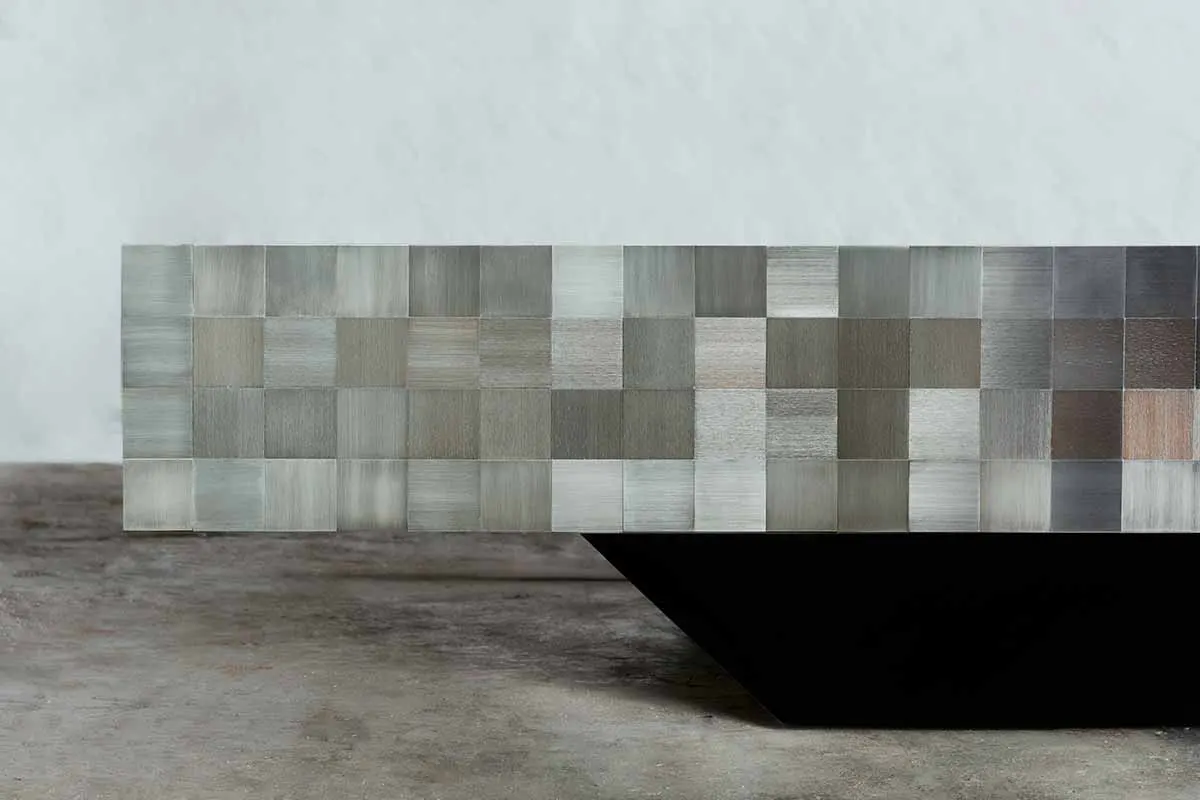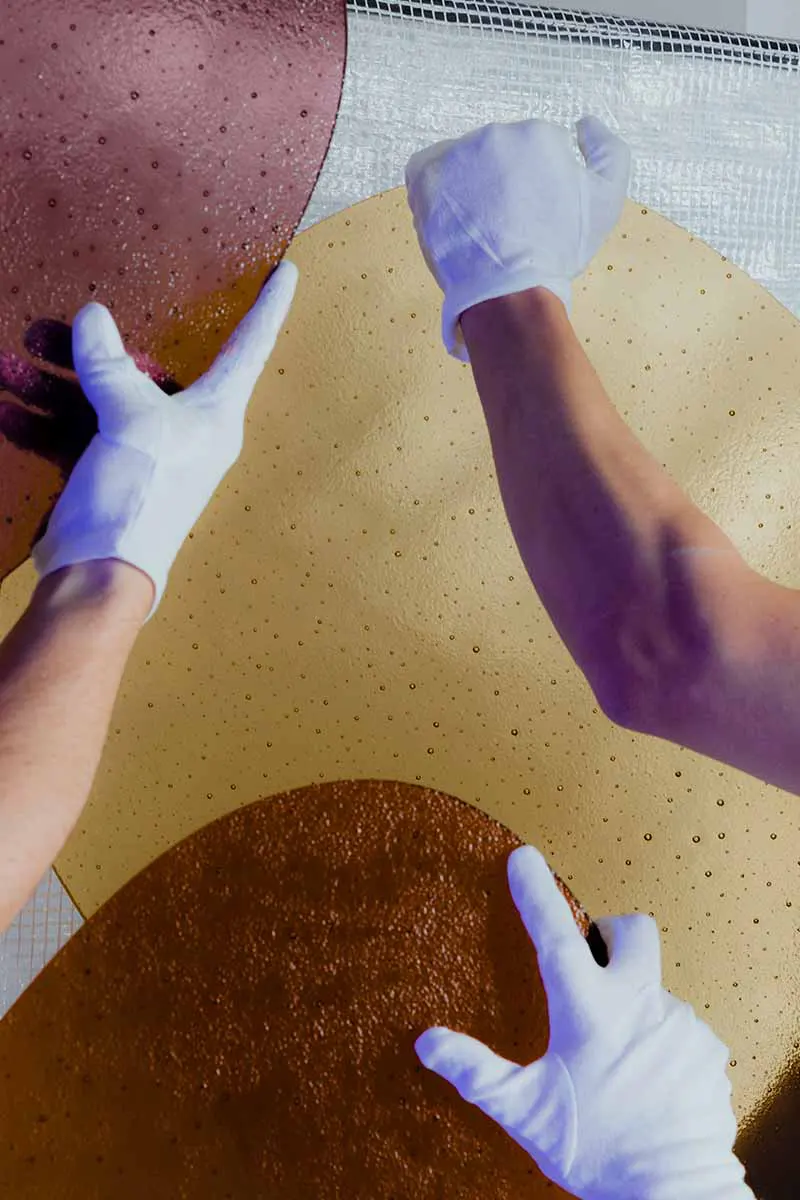A collaboration between the founders of TGDD and Fonderia Artistica Campagner puts Italian craftsmanship under the spotlight again
Lampoon presents The Great Design Disaster
Imagine being a design collector having carte blanche to express your most audacious desires and see them realized by some of the most skilled Italian and international craftsmen. This is now possible thanks to The Great Design Disaster (TGDD), stemmed by the cutting-edge approach towards design collecting of the two co-owners and founders.
Joy Herro – interior design graduate in Beirut and product design post-graduate in Rome. Deeply interested in historical Italian design – and Gregory Gatserelia – owner of the international Gatserelia firm for high-end residential and hospitality projects and art and designer advisor. TGDD aims at bridging the commercial gap between collector and artisan by encouraging cooperation between the two. During her years as gallery manager in Milan, Herro had the opportunity to foster her passion and insight into the Italian design sector.
«At that time Gregory used to ask me to find local artisans to produce bespoke pieces for his customers. I soon realized that the collector likes to be involved in the process of selecting materials and craftsmen. We therefore decided to deepen this trend, making the collector the absolute protagonist: designer and creator of his own pieces. A designer is usually never flexible, he has the ego of an artist. We have given collectors with a trained eye and experience the opportunity to express their ideas and desires, as well as their personal vision of design», she explains.
Herro’s curiosity with behind-the-scenes dynamics, allowed her to discover workshops and local craftsmen who are now part of TGDD’s network
«Although we also have many projects in Paris, Italians craftsmen are the most flexible and passionate; the more complicated the project the more enthusiastic they are. The relationship I create with these people is irreplaceable. The process gets closer to humanity and far from any commercial aspect».
The ironic name chosen by the founders indicates that when the customer is involved in the creation, a creative disaster will surely occur. Together with the communication strategy, which is also designed for a young open-minded audience, Herro and Gatserelia want to communicate their rebellious approach towards the formal world of the traditional collector.
In today’s design world driven by market dynamics, where the only thing expected from artisans and collectors is creating and purchasing, Herro and Gatserelia have the common belief that the design process deserves more authenticity, honesty and passion.
How The Great Design Disaster works
As in the best recipes, the success of TGDD lies in few, high-quality ingredients. A bold collector who is ready to step into the role of the creative conceiver, the Agents – designers and developers who translate the collector’s idea into a feasible project – and the craftsman who shapes the idea into one of a kind object. According to Herro, the world of collectible design is shifting from mass design and replicas – which used to be synonymous with market success – to a made-to-measure, on-demand approach.
«We do not want to replace traditional market intermediaries, our work is complementary to theirs. Gregory is also an art advisor, we buy a lot of pieces for our clients. But what we cannot find on the market we create from scratch in order to fully meet the client’s request», Herro explains.
A group of French and Lebanese creatives, led by Herro and Gatereslia
The Agents are a group of French and Lebanese creatives, led by Herro and Gatereslia, who try to enter the world of the collector to understand their idea and interpret it in drawings. The whole process starts with a need, a desire, an idea. Once the technical requirements have been defined, they look for a match with a craftsman capable of producing the piece.
«The collector does not have the language of the designer, the craftsman does not have the language of the collector. It is necessary to create a bridge between them». Finally, the piece must be consistent with the whole collection of the creative conceiver, which involves further stylistic research.
«They promote the work of skilled artisans without whom the oeuvre of artists and designers would never see the light. We want to change the rules of the game and give a more truthful image of what is happening behind the scenes as well. Now the relationship is very commercial and lacks humanity. We want to bring the human element and confrontation back to the center of transactions».
The different types of collectors
They usually engage with two types of collectors. The speculators, who buy luxurious pieces and lock them in storages, and the emotional ones, who they meet at fairs and gallery exhibitions. They touch the pieces, study the materials, and are interested in the object’s history. Not only in market trends or money value. This type of collector is more proactive and willing to experiment, as well as able to appreciate the production and craftsmanship process.
In fact, it is only with the emotional collectors that Herro and Gatserelia can further elaborate the concept of TGDD. The pieces required vary from very functional objects to outright follies or whims. The Agents’ task is also to explain to the client what is feasible and what is not. «A collector once commissioned a huge glass cube, similar to those of Ai Wei Wei. We asked the collector if they had the money to buy a giant oven and leave the cube to cook for a year like Ai Wei Wei did. In this case the problem of sustainability was also involved», Herro says.
The Great Design Disaster and Fonderia Artistica Campagner
The artistic foundry was founded in the 70’s by master craftsman Antonio Campagner, and now directed by his son Davide, specializing in artisanal production technique, a highly precise craft with a rare process of printing using natural sands.
Herro discovered the Fonderia after painstaking research efforts as many artisans who work for the most renowned artists and brands in the world, are not allowed to sign the pieces they make. «This is an issue that TGDD is tackling and fighting against. By putting the artisan at the forefront, we are ensuring the survival of the crafts and its perpetuity for the next generations», Herro explains.
Manifesting the value of craftsmanship and the vision of the design
The Fonderia is one of the backbones of the design industry in Italy and TGDD wants to continue to demonstrate, by opening the doors of the behind scene, the value of how similar artisans bring to life the objects of our desires and that the beauty behind the unique pieces is definitely the human behind it. With the Fonderia, TGDD have the common interest in the luxury of things slowly made, one piece at a time, manifesting the value of craftsmanship and the vision of the design.
«At first, all the people we asked for their opinions told us to not do it because TGDD’s philosophy runs counter to the traditional market dynamics and to the activity of galleries selecting artists and pushing them onto the market. […] Some people still do not understand what we do. But it is only the beginning and we know that, over time, it will become clear and the market will get used to this novelty».
The Great Design Disaster
An art & design project aiming to bridge the commercial gap between collector and artisan, by facilitating an intimate collaboration born from the dreams of the art & design collector him/herself and crafted by a master artisan. The design duo and founders, Gregory Gatserelia and Joy Herro; with their experience, vision and knowledge, are able to initiate, guide and develop this collector/artisan relationship to fruition. The Great Design Disaster challenges the commercial status quo, by offering a made-to-measure, on-demand approach. A sustainable & luxurious alternative to impersonal, mass design and production.




















